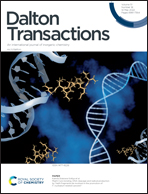In situ construction of superhydrophilic crystalline Ni3S2@amorphous VOx heterostructure nanorod arrays for the hydrogen evolution reaction with industry-compatible current density†
Abstract
The synergistic effect of a highly active surface/interface and an optimized electronic structure of electrocatalysts is of great significance to improve the performance of the hydrogen evolution reaction. Herein, a superhydrophilic core@shell heterostructure nanorod-integrated electrode composed of an amorphous VOx nanoshell (3–7 nm) and a crystalline Ni3S2 core supported on Ni foam (CS–NS/NF) was prepared by an in situ conversion method. We prove that the amorphous VOx not only helps to kinetically decouple the adsorption/dissociation of hydroxyl/water, but also enriches the active sites, thereby significantly enhancing the electron transfer efficiency and electrocatalytic activity toward the hydrogen evolution reaction (HER). The optimized CS–NS/NF has excellent hydrogen production performance, with overpotentials of 335 and 394 mV at current densities of 500 and 1000 mA cm−2, respectively, as well as superior durability for over 68 h in 1 M KOH.



 Please wait while we load your content...
Please wait while we load your content...